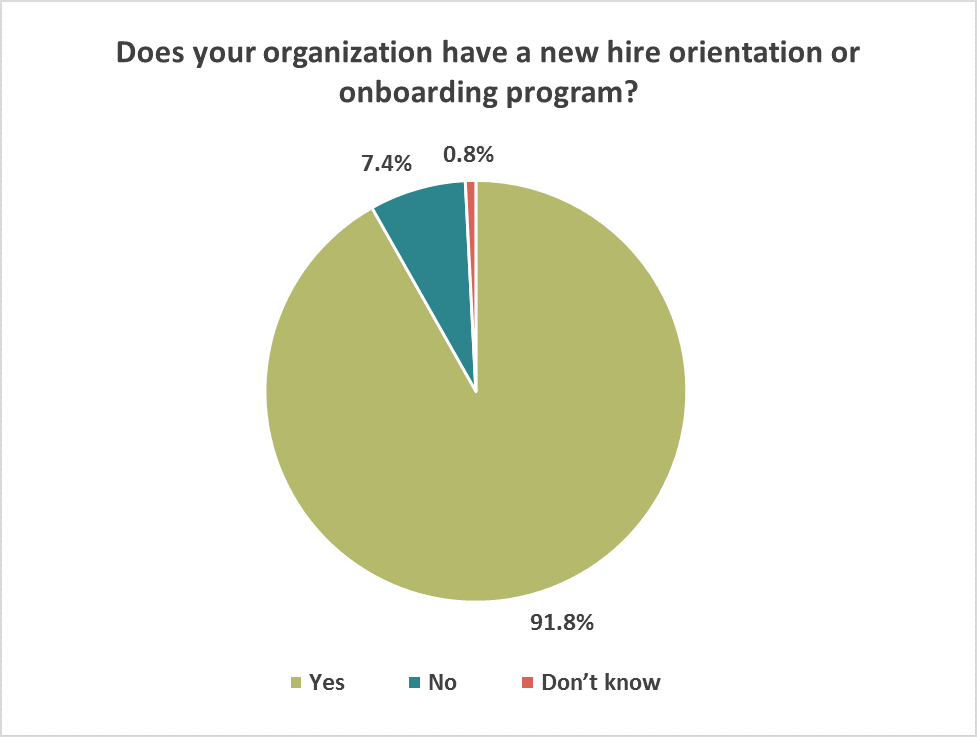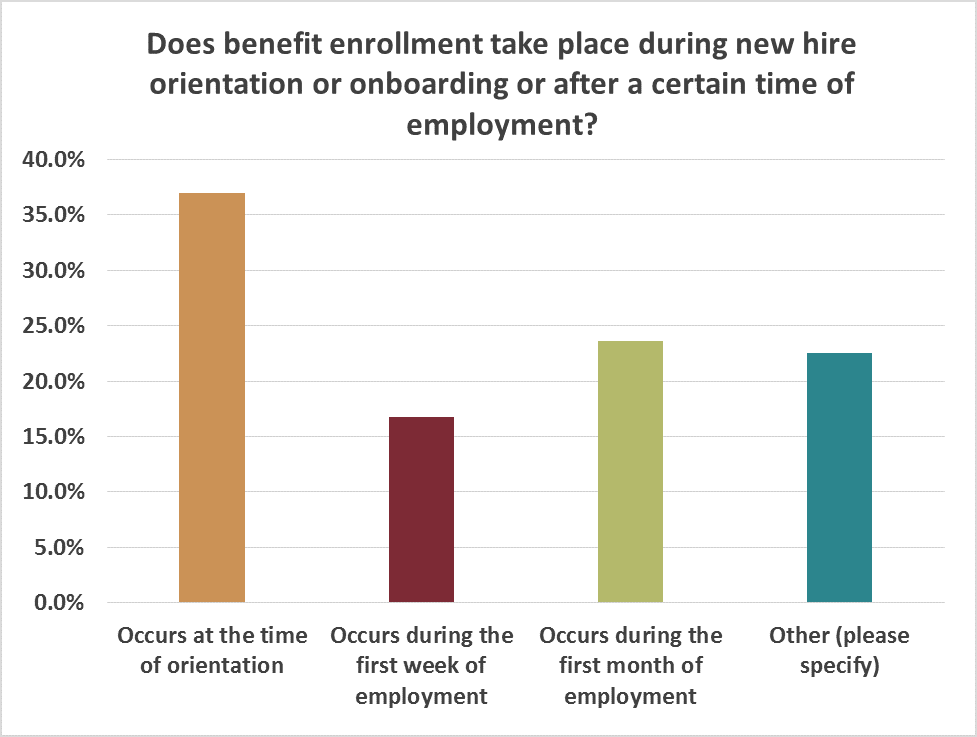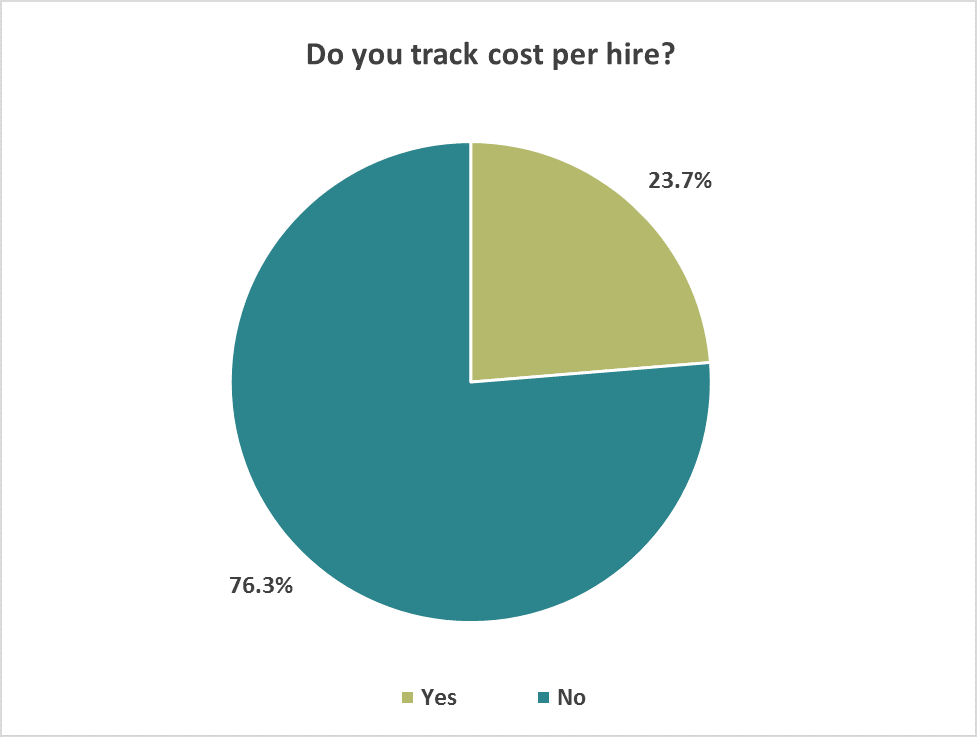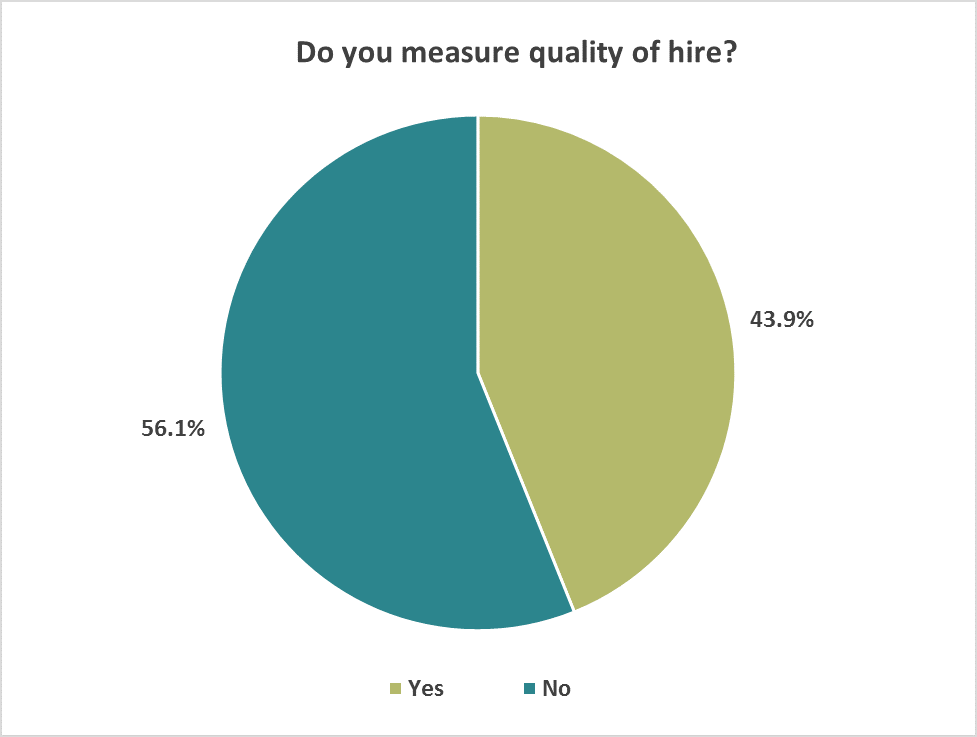 |
The Features of Your Job Website Page
Nearly everyone’s job website has “Job descriptions” on it. 63.4% of the job of website boards features an application form, and (61.2%) includes résumé delivery.
|
Which of the following does your recruiting or jobs website page feature? (Check all that apply) |
|
|
Answer Options |
Response % |
|
Job descriptions |
86.6% |
|
Application form |
63.4% |
|
Résumé delivery |
61.2% |
|
Quotes from current employees |
10.4% |
|
Videos of current employees |
9.1% |
|
Virtual tour of facilities |
5.6% |
|
Interactive features |
5.6% |
|
Other (please specify) |
|
The Role of Your Job Website Page
The overwhelming majority of respondents feel that their jobs website or Web page plays at least a somewhat important role in their recruitment program. Specifically, 47.8% said that it was “An important role” and 30.7% said it was “Somewhat important.” Only 16.9% said it was “Not very important.”
New Hire Orientation
The great majority of respondents (91.8%) say that they do have a new hire orientation program at their organization. 7.4% said they do not, and less than 1% said they do not know.

Length of Orientation
Participants that answered “Yes” to the previous question were asked to specify the length of their onboarding process. Answers were fairly evenly split across a number of possibilities. 20.3% said that it’s an ongoing process during the first 1–3 months of employment. 18.4% say a half-day of orientation, while 15.8% say 1–2 hours of orientation. The least common practice (1.9%) involves a process where a teammate or manager acts as a mentor.
Occurrence of Benefit Enrollment
Most survey takers (37.0%) say that benefit enrollment occurs at the time of orientation. 23.6% say that it occurs during the first month of employment, and 16.8% say it happens during the first week of employment. 22.5% said “Other.” Some of the other responses were:
- After 30 days
- After 60 days
- After 90 days

Management’s Role in Onboarding
When asked if management has a role to play in their company’s onboarding program, 73.4% said that they do. 23.5% said that they don’t, and only 3.1% said they didn’t know.
Management Onboarding Training
51.3% of respondents said that their management team does not receive training on how to successfully onboard new employees. 40.6% said they do receive training, and 8.1% do not.
New Employee Mentoring
When asked if their onboarding program provides mentors or buddies to new employees, 42.2% said “Yes, in addition to an onboarding process.” Only 3.6% did that instead of an onboarding process. The majority (48.8%) said “No.”
Do You Track Cost per Hire?
Most survey takers (76.3%) do not track cost per hire. Only 23.7% say that they do.

Average Cost per Hire
Not surprisingly, the highest cost per hire is for executives—46.6% of respondents say that executives cost at least $5,001 per hire. Senior management is the second most expensive, with 33.1% saying that they cost $2,501 to $5,000 per hire. 37.0% of respondents say that nonexempt employees cost the least, between $0 and $250 per hire.
Measuring Time to Fill
More respondents measure time to fill (41.3%) than measure cost per hire (23.7%). Still, the majority of respondents (58.7%) don’t measure this metric.
Average Time to Fill
Just as executives cost the most per hire, they also take the longest to find. 58.7% of those polled say it takes 60 days or more to fill executive positions. Also like cost per hire, nonexempt employees are the quickest to fill. 30.1% of participants said it takes between 1 and 15 days to fill nonexempt positions.
Measuring Quality of Hire
43.9% of survey takers say that they do measure quality of hire, while 56.1 say they do not.

Quality of Hire Metrics
When asked what metrics they use to measure quality of hire, respondents overwhelmingly answered “Retention” (55.0%) as their number one metric. Other methods like “Hiring management satisfaction,” “Average performance rating of new hires vs. standard,” and “production level of new hire after X months vs. standard” all were below 20%. 8.6% of participants answered “Other.” Here are some of their responses:
- All of the above.
- I don’t know.
- New hire interviews after a period of time.
- It varies based on the type of positions for which recruitment is required.
- Performance during training period and actual job performance.
Alternate Metrics
49.8% of participants say they track “Offer to acceptance ratio” while 42.4% of participants say that they track applicant experience. Metrics like “Interview to hire ratio” (35.0%) and “time to fill broken out by action, time from posting to review, time from offer to acceptance” (23.2%) also got decent percentages. The least used was “Relocation costs” (13.3%).
Who Responded?
A total of 516 participants responded to the Recruiting Survey, representing a diverse array of industries, business types, organizational sizes, and locations. Respondents hailed from all across the United States and also around the world. The largest group of those who responded was from the U.S. South (19.49%). The U.S. Northeast/Mid-Atlantic was second at 17.7%, and close behind was the U.S. East Central at 16.6%. The smallest segment based on location comes from the U.S. Central/Rocky Mountain/Southwest with only 8.2%.
Of those who identified themselves, the majority (61.1%) represent privately owned, for-profit companies; 20.2% are employed by nonprofits; 10.8% work in the public sector; and government organizations were represented by 7.9% of the response pool.
Respondents identified themselves as being employed in 21 different industry categories as follows:
At 53.0%, managers made up the largest portion of the respondent pool. A little less than a third of participants (19.3%) identified as executives (i.e., VP level or higher), and staff-level employees made up 21.4% of those surveyed. The smallest group represented (at 6.2%) was supervisors.
Speaking of recruiting, have you heard about BLR’s premier recruiting event, RecruitCon 2016?
The job market is reenergized, making this an exciting time for prospects and employers alike. But while the potential for landing star candidates is high, so is the competition, meaning employers need to be increasingly innovative with their recruiting techniques if they want to win the war on talent. Luckily, BLR® has your interests in mind, with RecruitCon 2016: Tech, Trends, and Tactics for the New Era of Talent Acquisition. Join us in Las Vegas on May 12 – 13, 2016 and learn all about recruiting, from sourcing to onboarding to retention.
Register today for RecruitCon 2016: Tech, Trends, and Tactics for the New Era of Talent Acquisition!
Here are just some of the exciting features at RecruitCon 2016: Tech, Trends, and Tactics for the New Era of Talent Acquisition:
- Social sourcing strategies
- Diversity recruitment
- Recruiting metrics to measure ROI
- Relationship management technologies
- Recruitment referral programs
- Talent assessments
- Mobile recruiting
- Onboarding techniques
- And more!
The industry is saturated with new technologies to supercharge acquisition efforts, new analytics trends to support employers’ evidence-based talent decisions, and new strategies to help organizations fine-tune their culture and brand messaging for recruitment and retention. We did the work of bringing the best of the best practices to the forefront at RecruitCon 2016, the HR conference that puts you in direct connection with industry experts and progressive peers so you can learn to conquer your recruiting challenges.
